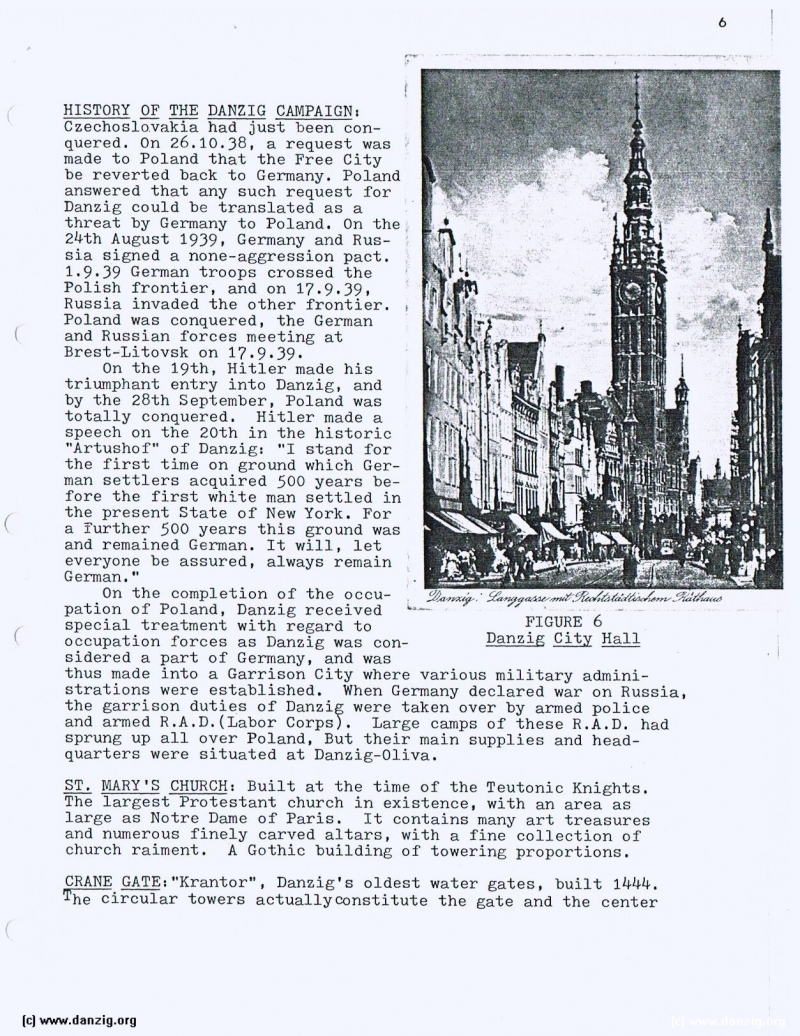
HISTORY OF THE DANZIG CAMPAIGN
Czechoslovakia had just been conquered. On 26.10.38, a request was made to Poland that the Free City be reverted back to Germany. Poland answered that any such request for Danzig could be translated as a threat by Germany to Poland. On the 24th August 1939, Germany and Russia signed a none-aggression pact. 1.9.39 German troops crossed the Polish frontier, and on 17.9.39, Russia invaded the other frontier. Poland was conquered, the German and Russian forces meeting at Brest - Litovsk on 17.9.39.
On the 19th, Hitler made his triumphant entry into Danzig, and by the 28th September, Poland was totally conquered. Hitler made a speech on the 20th in the historic “Artushof” of Danzig: “I stand for the first time on ground which German settlers acquired 500 years before the first white man settled in the present State of New York. For a Further 500 years this ground was and remained German. It will, let everyone be assured, always remain German.”
On the completion of the occupation of Poland, Danzig received special treatment with regard to occupation forces as Danzig was considered a part of Germany, and was thus made into a Garrison City where various military administrations were established. When Germany declared war on Russia, the garrison duties of Danzig were taken over by armed police and armed R.A.D. (Labor Corps). large camps of these R.A.D. had sprung up all over Poland, But their main supplies and headquarters were situated at Danzig - Oliva.
ST. MARY’S CHURCH: Built at the time of the Teutonic Knights. The largest Protestant church in existence, with an area as large as Notre Dame of Paris. It contains many art treasures and numerous finely carved altars, with a fine collection of church raiment. A Gothic building of towering proportions.
CRANE GATE: ”Krantor”, Danzig’s oldest water gates, built 1444. The circular towers actually constitute the gate and the center
Danzig Report Nr. 3 – May - 1975, Page 6.
Hits: 3664
Added: 24/05/2015
Copyright: 2025 Danzig.org

